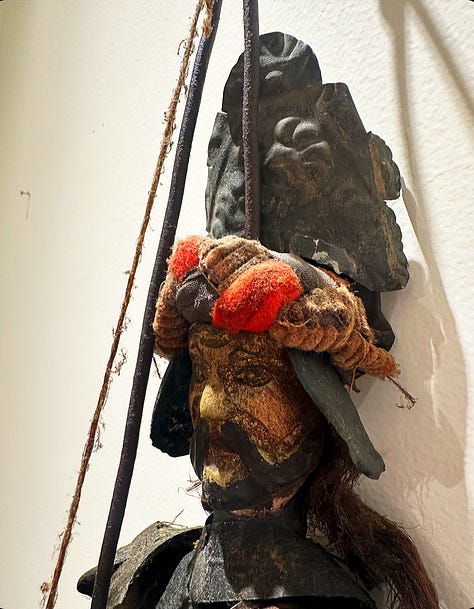Pasta Arriminata
Sicilian Pasta with Romanesco Broccoli, Fried Onions, Pine Nuts, Raisins Anchovies & Saffron
To truly appreciate authentic Sicilian cuisine, one must delve into the rich cultural influences of the Arab world, which have left an indelible mark on the island's gastronomy.
When I first visited Sicily as a young chef's apprentice, one of the things that struck me was the mysterious traces of Arabic culture that seem to permeate the art, architecture, cuisine, language, flora, and fauna of that magical island. Within the layers of this simple yet evocative pasta one can taste the echoes of this rich and diverse heritage, a testament to the enduring legacy of Sicily's cultural fusion.



During the Arab rule of Sicily from the 9th to the 11th centuries, Sicilian cuisine underwent significant transformations. Arab traders and settlers introduced a plethora of new ingredients such as citrus fruits, almonds, pistachios, and spices like saffron. These culinary treasures found their way into Sicilian kitchens, leaving an indelible mark on the island's gastronomy. And Pasta Arriminata boasts much of the rich history that reflects the island's diverse cultural influences.
The recipe is a great example of how to build flavors in a pan for adornments to pasta. Onions are fried in extra virgin olive oil until golden and caramelized, to which anchovies, golden raisins, pine nuts and threads of saffron are added. Blanched cauliflower or romanesco broccoli is then added and the whole thing is ‘mixed around’ (the name of the dish comes from the Italian word for mixing). Pasta water is added to deglaze the pan and create the sauce that coats the perfectly cooked noodles.
Any shape will do, though it’s often served with bucatini (in Sicily the same noodle with the hole down the center is called perciatteli, from the word for whistle, as the slurping of such noodles can create!) The dish can be served unadorned or with breadcrumbs fried in olive oil or grated pecorino. I actually like a bit of both!
The dish's harmonious blend of sweet and savory flavors, exemplified by the pairing of raisins with anchovies and the subtle aroma of saffron, bears witness to the fusion of culinary traditions that occurred in Sicily under Arab rule.
One historical anecdote that underscores the Arab influence on Sicilian food and culture is the tale of Ziryab, a renowned polymath and musician who migrated from Baghdad to the court of the Emir of Palermo in the 9th century.
Ziryab, whose real name was Abu al-Hasan 'Ali ibn
Nafi', was not only a celebrated musician but also a pioneer in various fields, including cuisine and social etiquette. His influence extended far beyond the realm of music; he left an indelible mark on the cultural landscape of the medieval Islamic world, including Sicily during the Arab rule.
Ziryab is believed to have introduced a wide array of new ingredients and culinary techniques to Sicily. This includes the cultivation and use of citrus fruits such as oranges and lemons, as well as the introduction of almonds, pistachios, and spices like saffron. These ingredients significantly enriched Sicilian cuisine and are still prominent in Sicilian dishes today, including Pasta Arriminata.
In addition to his culinary contributions, Ziryab is credited with revolutionizing cooking techniques in Sicily, introducing methods such as marinating, stewing, and slow-cooking. These techniques allowed for the creation of more complex and flavorful dishes, contributing to the development of Sicilian culinary traditions.
Ziryab's presence at the court of the Emir of Palermo facilitated cultural exchange between the Arab world and Sicily. He organized lavish feasts and gatherings where guests could sample a diverse array of dishes inspired by Arab, Persian, and Mediterranean culinary traditions. This cultural exchange had a profound influence on Sicilian society, shaping its cuisine, fashion, and social customs.
Ziryab's influence on Sicilian cuisine and culture was profound and far-reaching. His innovations and contributions enriched Sicilian society, leaving an indelible mark on the island's culinary traditions and cultural heritage. Through his culinary prowess and cultural influence, Ziryab played a pivotal role in shaping the vibrant tapestry of Sicilian history. And within the layers of Pasta Arriminata, one can still taste the echoes of this rich and diverse heritage, a testament to the enduring legacy of Sicily's cultural fusion
THE RECIPE:
Keep reading with a 7-day free trial
Subscribe to CHESTER HASTINGS - The Recipes to keep reading this post and get 7 days of free access to the full post archives.












